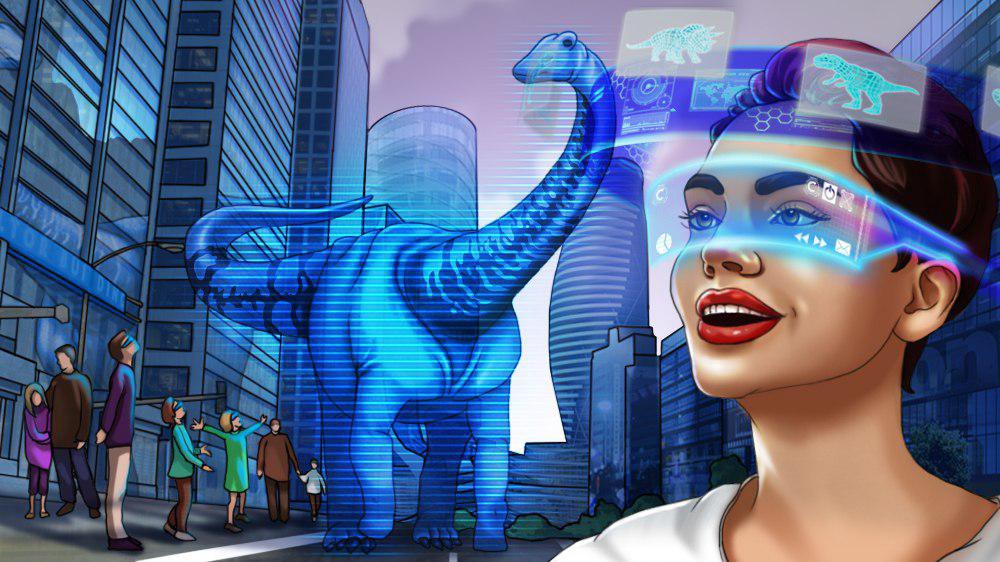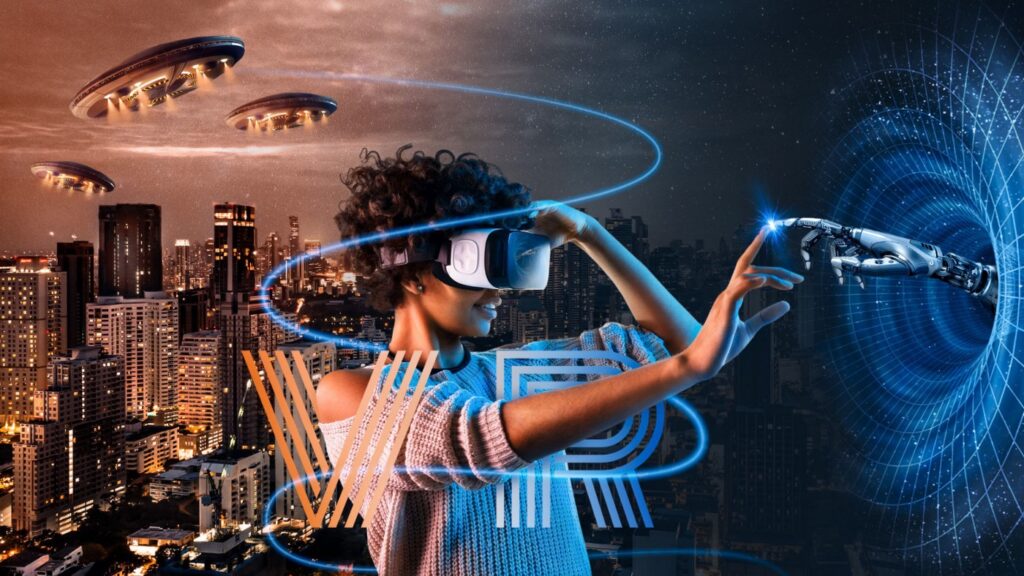METAVERSE
The Metaverse: Where reality is just the beginning
“Metaverse” refers to a shared virtual reality environment available over the internet, where users interact with each other and digital objects. Technology such as virtual reality and augmented reality is making this concept a reality, as portrayed in science fiction.
What is the Metaverse?
The metaverse is a virtual world that exists entirely in a computer-generated environment. Users can access it through a variety of devices, such as VR headsets, computer monitors, and smartphones. Users can interact with each other and digital objects in the metaverse, such as avatars, buildings, and vehicles. They can also participate in activities such as gaming, socializing, and shopping. The metaverse is often considered a collective virtual shared space created by the convergence of nearly all human-made spaces, both physical and virtual.
FOR SERVICES
Types of Metaverse:
There are different types of the metaverse, depending on the technology used to create them and the activities they support. Some examples include:
Virtual Reality Metaverse
Augmented Reality Metaverse
Social Metaverse
Application of Metaverse:
Metaverse can be used for a variety of purposes, including entertainment, education, and business. Some examples include:
Gaming
Socializing
Business
“Metaverse” refers to a shared virtual reality world available over the internet, where users interact with each other and digital objects. At the start, this concept had just part of science fiction movies but is now this concept becoming a reality with the arrival of new technologies such as virtual reality and augmented reality. The metaverse has a wide range of potential uses, from entertainment and socializing to education and business. Technological advances will enable the metaverse to become an integral component of our digital lives, allowing us to collaborate, communicate, and be creative.
What Are the Current and Future Goals of the Metaverse?
Current Goals:

- Virtual Reality and Augmented Reality Integration: The current goal of the metaverse is to integrate virtual reality VR and AR technologies to create immersive and interactive virtual worlds.
- Social Interaction: The most interesting goal of the metaverse is to facilitate social interaction among users in virtual environments. This includes the ability to communicate, collaborate, and participate in shared activities.
- Content Creation and Consumption: Another goal of the metaverse is to enable users to create and consume various types of content, such as games, videos, music, and more, within virtual worlds.
Future Goals:
- Economic and Business Opportunities: In the future, the metaverse will expect to provide new economic and business opportunities, such as virtual commerce, digital asset ownership, and virtual real estate.
- Education and Training: Metaverse at largescale expects to provide a huge platform for education and training, allowing students to attend virtual classes and professionals to receive virtual training and certification.
- Public Services: In the future, metaverse may also be used to provide public services, such as virtual government offices and virtual health clinics.

Overall, the goal of the metaverse is to create a shared, immersive virtual world where users can interact, create, and consume various types of content in a seamless and natural way. The future of the metaverse is expected to bring new opportunities and possibilities that will shape the way we live, work, and learn.
Relation Of Metaverse and Virtual Reality
The metaverse and virtual reality (VR) both share some common goals but distinct concepts. The metaverse refers to a virtual world that is fully immersive and interactive, in which users can interact with each other and with digital objects in a way that feels real. It is often described as a shared, persistent, and highly immersive virtual space.
On the other hand, virtual reality refers to a computer-generated simulation of a three-dimensional environment that can be interacted with using specialized equipment, such as a VR headset. In virtual reality, users experience a sense of presence in a digital environment, making it ideal for gaming, training, and therapy applications.

Both the metaverse and VR have some common characteristics, such as the use of computer-generated graphics to create a digital environment and the use of specialized equipment to interact with that environment. As an alternative to VR, the metaverse can create a fully immersive and persistent virtual world, while the metaverse focuses more on creating immersive experiences within a specific application.
